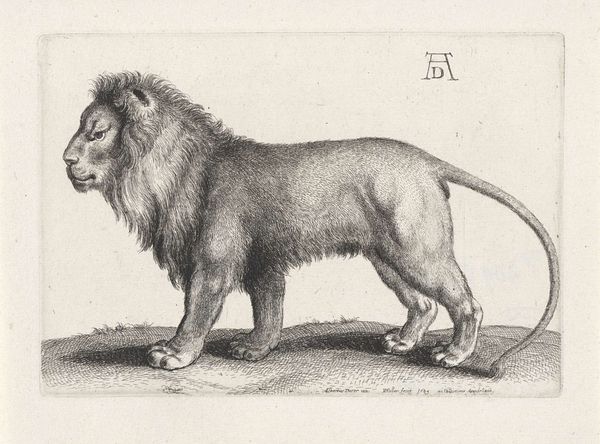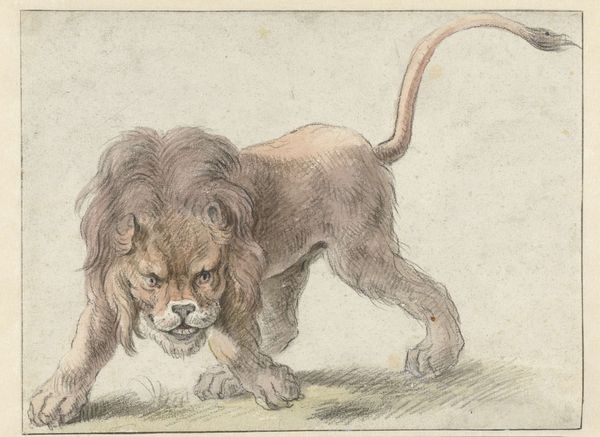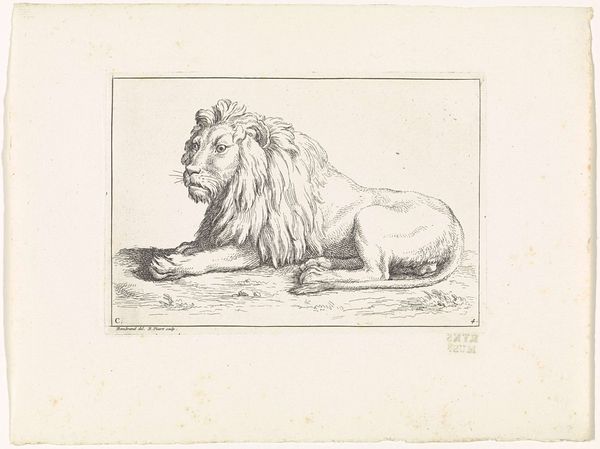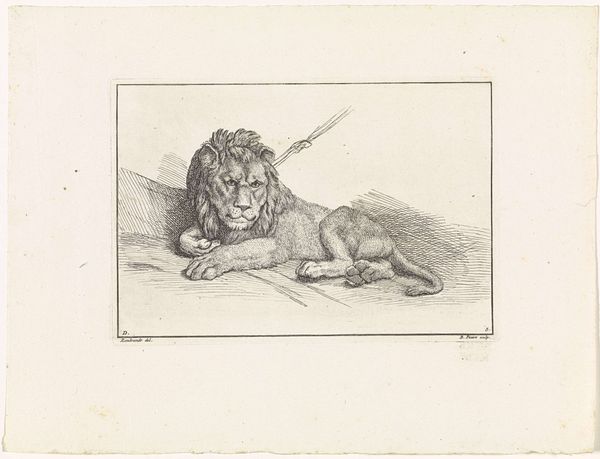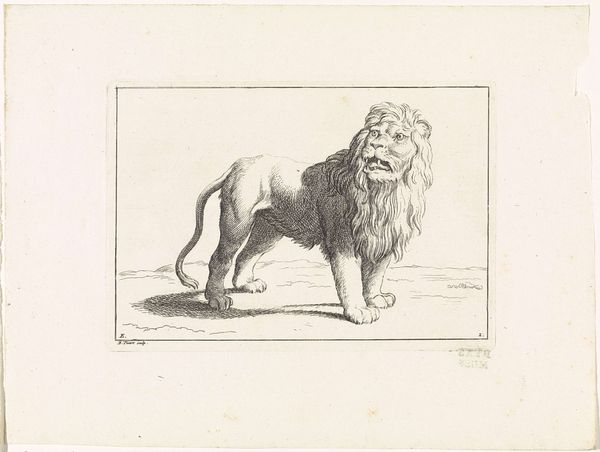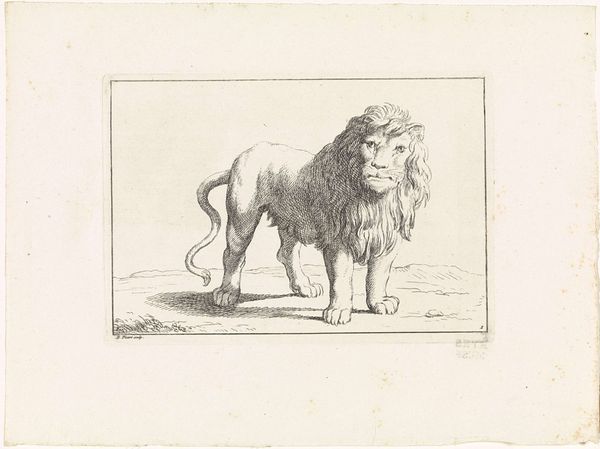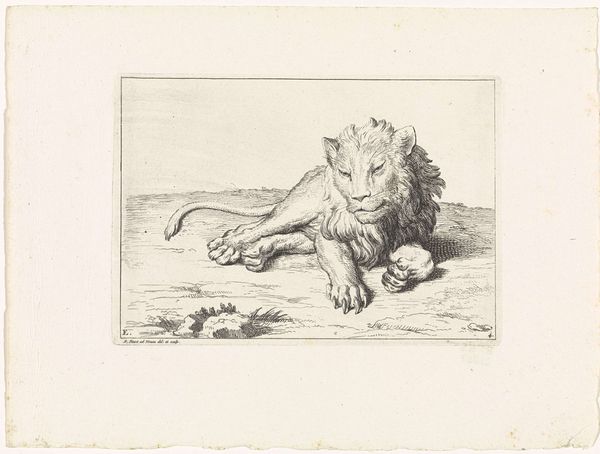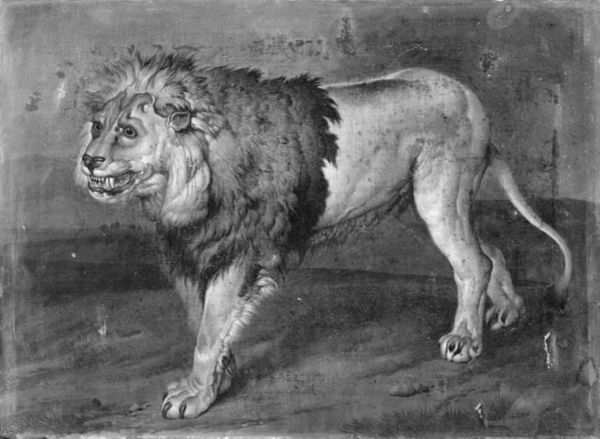
Lion c. 19th century
Copyright: CC0 1.0
Editor: This is Victor Adam's "Lion," and it's a striking lithograph. There's an interesting contrast in textures, especially between the lion's mane and the smoother rendering of its body. What can you tell me about the techniques used to create this work? Curator: The lithographic process itself is crucial here. The artist's hand, translated through the grease crayon onto the stone, determines the final image. The varying pressure and texture of the crayon are the true subject. Editor: So, it's less about the "lion" and more about the labor involved? Curator: Precisely. Consider the accessibility of printmaking in the 19th century. It allowed for mass production and dissemination of images, impacting how people understood nature. What was the function of such images, and for whom? Editor: That’s a fascinating way to look at it; I hadn't thought about the production process as being central to its meaning. Curator: Thinking about production changes our relationship to the object itself, and to the artist.
Comments
No comments
Be the first to comment and join the conversation on the ultimate creative platform.
